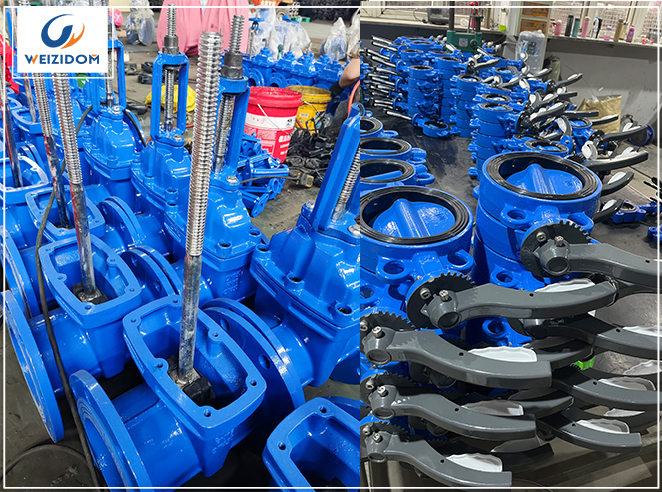-
How to Determine if a Gate Valve Needs Replacement?
Determining whether a gate valve needs replacement mainly involves considering five aspects: lifespan, structure, safety seal, operational performance, and economic efficiency.
READ MORE12
2025.12

-
Engineering Project Butterfly Valve Selection and Reliable Supplier Guide
To purchase suitable HVAC valves, you can consider various factors such as operating conditions, valve type, material, brand, and supplier.
READ MORE05
2025.12

-
Central Asia Industrial Butterfly Valve Procurement Guide
High-quality industrial butterfly valves for Central Asian projects. Soft seal, metal seal, large-diameter options with DDP delivery and full technical support.
READ MORE18
2025.11

-
Which Valves Should Be Selected for High Pressure and High Temperature Conditions?
Under high temperature and high pressure conditions, gate valves, ball valves, globe valves, check valves, etc. can be selected according to different application scenarios.
READ MORE31
2025.10

-
How to Buy the Right Gate Valve? — WEIZIDOM Provides a Professional Selection Guide
When purchasing gate valves, you can scientifically select them through working condition analysis, structure selection, material matching and brand selection. WEIZIDOM has become a trustworthy partner with its professional manufacturing and quality service.
READ MORE24
2025.10

-
WEIZIDOM – China’s Leading Valve Manufacturer
WEIZIDOM is a leading valve manufacturer in China with over 20 years of R&D and manufacturing experience. It has six major production plants and specializes in the production of high-quality gate valves and butterfly valves.
READ MORE16
2025.10

-
Gate Valve Won’t Rise? Common Causes and Repair Guide
The gate valve may fail to rise during long-term operation. Common reasons include over-tight packing, impurity obstruction, thread damage, stem deformation, thermal expansion and contraction, etc.
READ MORE29
2025.09

-
Butterfly Valves in Fire Protection
Butterfly valve is widely used in fire water supply systems and related supporting facilities because of its compact structure, flexible opening and closing, and stable sealing performance.
READ MORE25
2025.09

-
WEIZIDOM Gate Valve Maintenance Methods
WEIZIDOM gate valve maintenance can be broadly categorized into three levels: daily inspections, scheduled maintenance, and shutdowns for major overhauls.
READ MORE18
2025.09

-
How Should Different Types of Gate Valves be Maintained Daily?
Gate valves are essential shut-off devices in industrial piping systems. Their reliability and lifespan are directly related to the safety and stability of the entire system. They can be categorized into various types based on their structure (such as gate disc design and stem movement), and their daily maintenance priorities vary. WEIZIDOM, based on years of industry experience, has summarized the following key maintenance points for different types of gate valves. Different Gate Valves Parallel gate valves have two parallel plates, which rely on medium pressure to achieve a seal. During routine maintenance, focus on checking for gate sticking and wear on the sealing surfaces. Regular cleaning of the gate disc groove is recommended to prevent impurity accumulation that may affect the sealing effect. For double-disc gate valves, check for failure of the intermediate spring. Wedge-type gate valves achieve sealing through the wedge-shaped action between the gate disc and the valve seat. During maintenance, pay special attention to wear on the sealing surfaces and regularly check for changes in the wedge angle. Single-disc wedge valves require attention to potential seizures caused by thermal deformation; double-disc gate valves require checking the flexibility of the hinge mechanism. ...
READ MORE12
2025.09

-
Differences Between Knife Gate Valves and Gate Valves
There are differences between knife gate valves and gate valves in terms of structural design concepts, applicable working conditions, performance characteristics, etc.
READ MORE28
2025.08

-
What are the material options for butterfly valves?
Common butterfly valve materials include carbon steel, stainless steel, and ductile iron.
READ MORE22
2025.08





